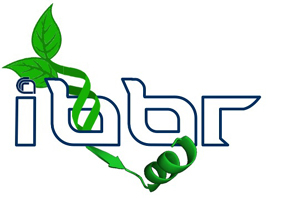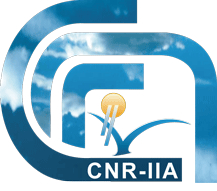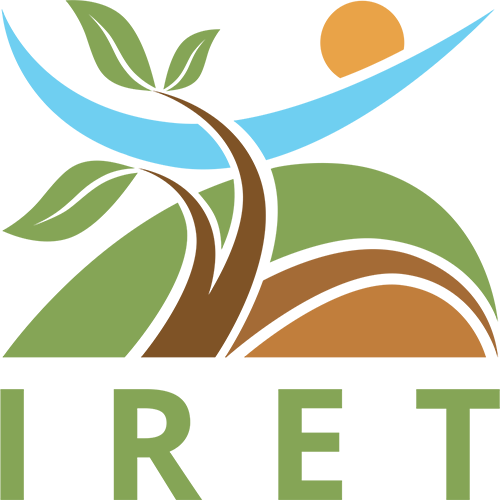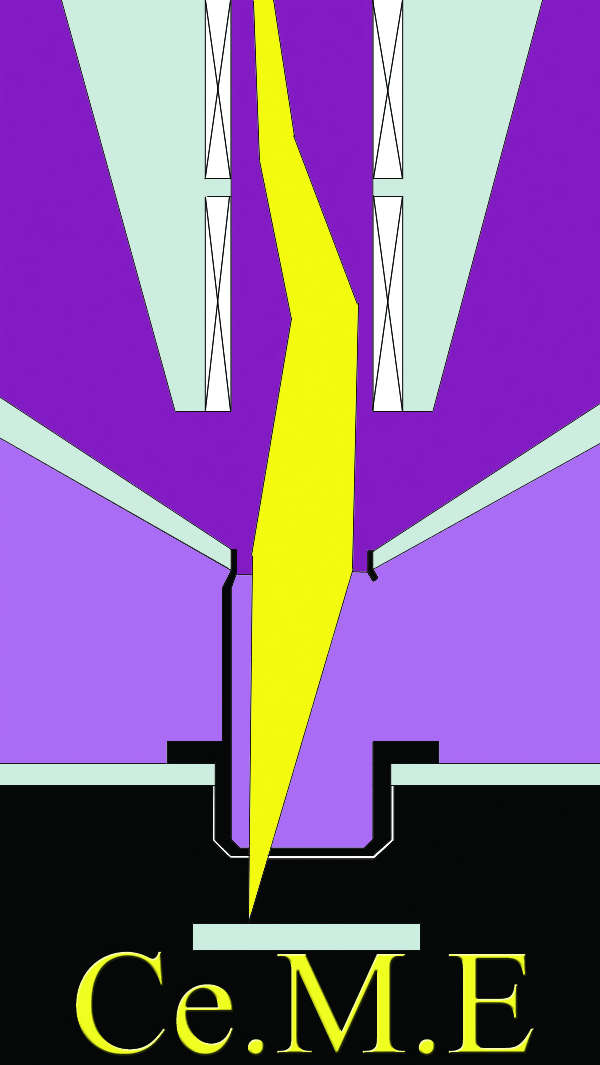Scientific Structures
Institutes
The the following institutes are located inside the Area di Ricerca:
-
Istituto di Scienze del Patrimonio Culturale (ISPC)
The institute addresses diverse issues ranging from the study of materials and techniques of execution of the artifacts, the identification of the causes and mechanisms of decay, the technical and scientific advice on restoration and preservation, development of methodologies and products for the restoration, development and fruition of works of art and their urban context.
-
Institute of applied physics "Nello Carrara" (IFAC)
The research fields of the Institute are: Methodologies and applications of electromagnetic waves, optics, quantum electronics, and interactions between radiation and matter; Structure of matter; Applied spectroscopy; Optoelectronics and photonics; Laser and applications; Electromagnetism; Optical Sensors and observation methodologies; Information processing.
-
Institute for Sustainable Plant Protection (IPSP)
The main research field of the Institute for Sustainable Plant Protection (Florence Unit) is the study of stress factors in crop and forest species for identifying resistance mechanisms, adaptation processes, and defense systems from biotic and abiotic stressors. The main goals are to improve both quality and quantity of crop production, to prevent and fight diseases in wild and cultivated plants, and to promote sustainable plant growth.
-
Institute for applied mathematics "Mauro Picone" (IAC)
The institute is active in the areas of development of highly advanced mathematical, statistical and computational models and methods to solve, in a mostly interdisciplinary context, problems with strong relevance to science, society and industry.
-
Institute of plant genetics (IBBR)
IBBR has two main goals:
- To increase our knowledge of biological systems by the study of the genetic pathways and the molecular mechanisms which regulate their function, adaptation, reproduction, evolution, and environmental interactions;
- To safeguard and sustainably manage bio-resources in agriculture, food production, environment and health with special regard to improvements in the management of agricultural and forest resources and in disease prevention.
-
Institute for atmospheric pollution (IIA)
The institute undertakes research and development activities in the following thematic areas:
- Air pollution in urban and industrial areas;
- Industrial pollution and environmentally sensitive areas;
- Analytical technology and methodology development for laboratory and platform based characterization of air quality and sustainability;
- Polar regions;
- Atmospheric pollutant cycles and global climate change influences;
- Observation systems and networks for air pollution in support of European directives and international conventions;
- Development of systems and technologies for geospatial data sharing and interoperability;
-
Institute of neuroscience (IN)
The research fields of the Institute are:
- Molecular, cellular, physiological, and pharmacological study of the nervous and neuromuscular systems;
- Study of biomedically relevant membrane phenomena;
- Studies on biological basis of mental processes and brain aging.
-
Istituto dei Sistemi Complessi (ISC)
Our unit hosts research on complex systems, that are systems composed of many elements whose mutual interaction gives rise to unexpected emergent phenomena. For example, the behaviour of brain cannot be anticipated from the study of an isolated neuron. Similarly, superconductivity cannot be anticipated from the study of a single electron. Statistical mechanics provides tools and techniques that are well suited to study complex systems and it is a common denominator to many ISC researchers. Yet, the emergence of collective behaviour is certainly not restricted to the physical sciences, but it is ubiquitous in nature, from biology, to social systems and economics. For this reason, the study of complex systems, be it at the theoretical or empirical level, requires a truly interdisciplinary mindset.
-
Research Institute on Terrestrial Ecosystems (IRET)
The research fields of the Institute are:
- Limnology and ecophysiology of aquatic ecosystems;
- Ecology of population;
- Evolutionary biology, biodiversity, and nature conservation;
- Macro- and micro-pollutants;
- Integrated biological control;
- Soil ecosystem, control and recovery of soil quality.
Other Scientific Structures
The Area di Ricerca also hosts the following structures:
-
LaMMA Consortium
On 20 December 2007, the Region of Tuscany, the Italian Research Council and the Foundation for Climate and Sustainability established the LaMMA Consortium - Environmental Modelling and Monitoring Laboratory for Sustainable Development. The main sectors in which the LaMMA Consortium specialises are meteorology, climatology, geographic information systems (GIS) and geology. The Consortium has also acquired considerable experience in the field of atmospheric pollutant dispersion modelling, anemological studies for the purposes of exploiting wind energy, marine and oceanographic modelling, monitoring of pollutants and the state of health of the sea, and monitoring of vegetation.
-
Ce.M.E.
The Ce.M.E. is a multidisciplinary center that carries out research activities in all fields requiring electron microscopy as an investigation tool. As such, it provides a fundamental support to CNR and University researchers as well as to public institutions, private citizens and businesses.
-
ENEA - Ufficio Territoriale per la Toscana
ENEA is the National Agency for New Technologies, Energy and Sustainable Economic Development. It's set up with the purpose of developing research and technology innovation, foster sustainable economic growth and promote technology transfer as well as providing advanced service to enterprise and support to the Public Administration, in the energy sector, notably in energy efficiency and nuclear energy, in climate and environment sector, in safety and human health, in new technology and in electrical system research.
-
Center Research & Enterprise (CRI)
The Center Research & Enterprise is a technology transfer office of CNR, opened in 2013 by the institutes of the CNR Research Area in Florence, with the crucial support of the Tuscany Region, as an official subject of the Tuscany regional network for innovation. The Center aims to exploit the research and technology know-how of CNR institutes, promoting their results in the knowledge society, offering to private companies advanced services, joint projects and professional training, for new technology transfer and innovation of processes and products.
Buildings Occupancy
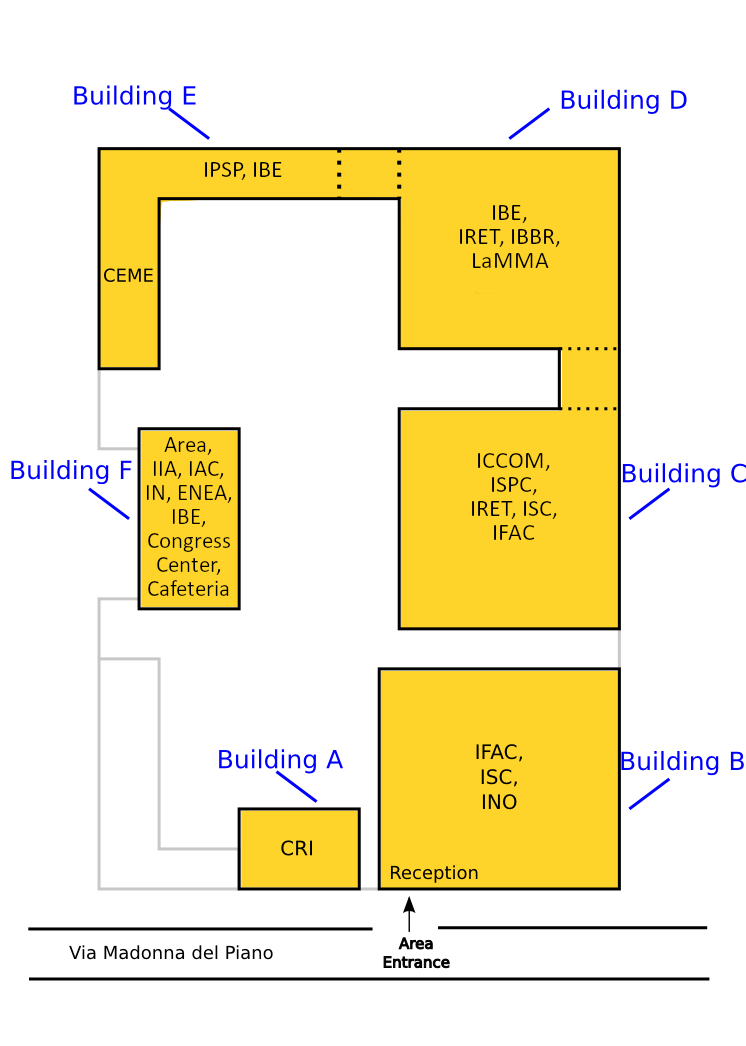
| Structure | Building |
|---|---|
| Reception | B |
| Congress Center | F |
| Cafeteria, Bar | F |
| Area Offices | F |
| IBE | D, E, F |
| ICCOM | C |
| ISPC | C |
| IFAC | B, C |
| IPSP | E |
| IAC | F |
| IBBR | D |
| IIA | F |
| IN | F |
| INO | B |
| IRET | C, D |
| LaMMA | D |
| CEME | E |
| ENEA | F |
| CRI | A |








